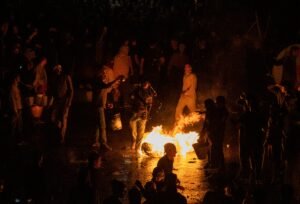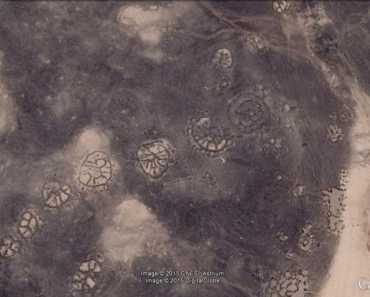The earth is mind-bogglingly huge. Looking at a globe, you might think you can fathom it, but really, few can. With the advent of Google Earth and satellite imagery, many have perused this global satellite map to see things they may never visit or simply appreciate the technology for what it is: a window to the rest of the world.
During these perusals, enthusiasts and professionals alike have stumbled across several anomalies. Some have explanations, while others remain mysterious.
Island In A Lake On An Island In A Lake On An Island (Philippines)
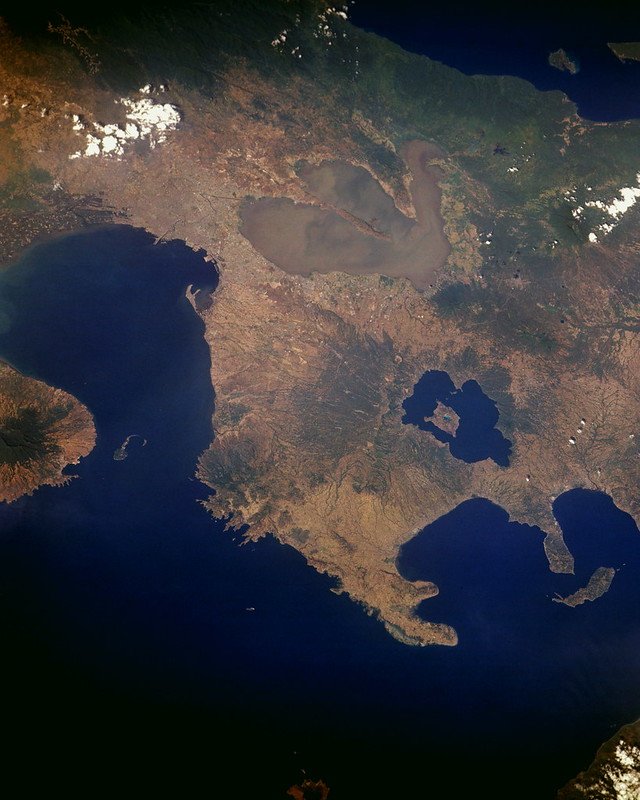
Image credit: NASA /Flickr
Inside a crater lake on an island called Volcano Island (named thus because it is a volcano and has frequently erupted), you will find Lake Taal on the Philippine island of Luzon. Within Volcano Island is Crater Lake, which is home to Vulcan Point, a small island. This creates a nesting doll citation but with land water. It is a rare and captivating feature on one of the world’s smallest volcanos.
8,500-Year-Old Wheel Structures (Jordan)
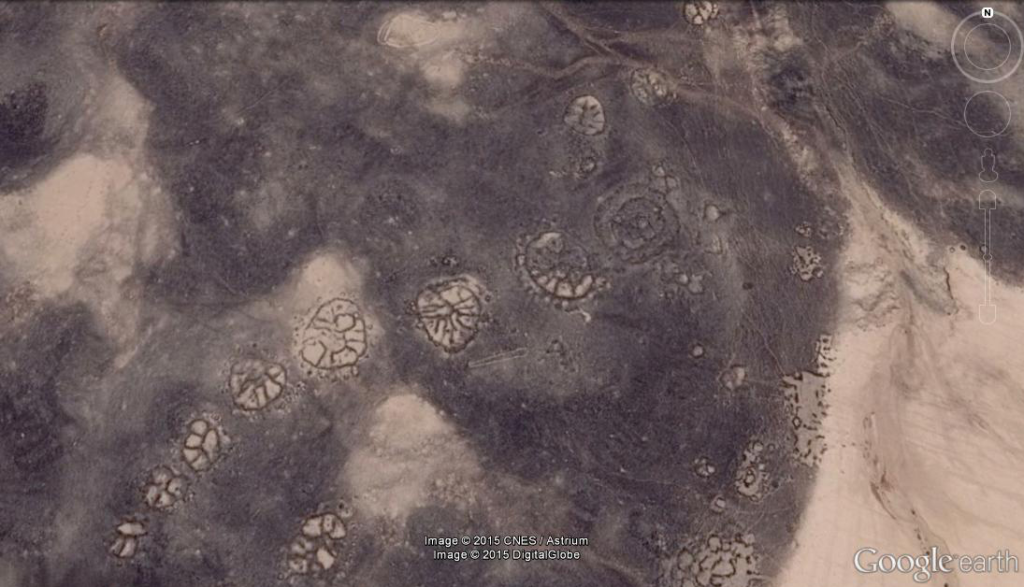
Image credit; Google Earth
To my American readers, yes, Jordan is a real place. Scattered across the Black Desert, you will spot ancient stone structures referred to as wheels. These are geoglyphs, much like the Nazca Lines, except older by millennia. The wheels have different designs, but they commonly feature spoke designs and circular formations. We don’t know what they were for, but some theories say they might have been astronomical calendars.
Unexcavated Pyramids (Egypt)
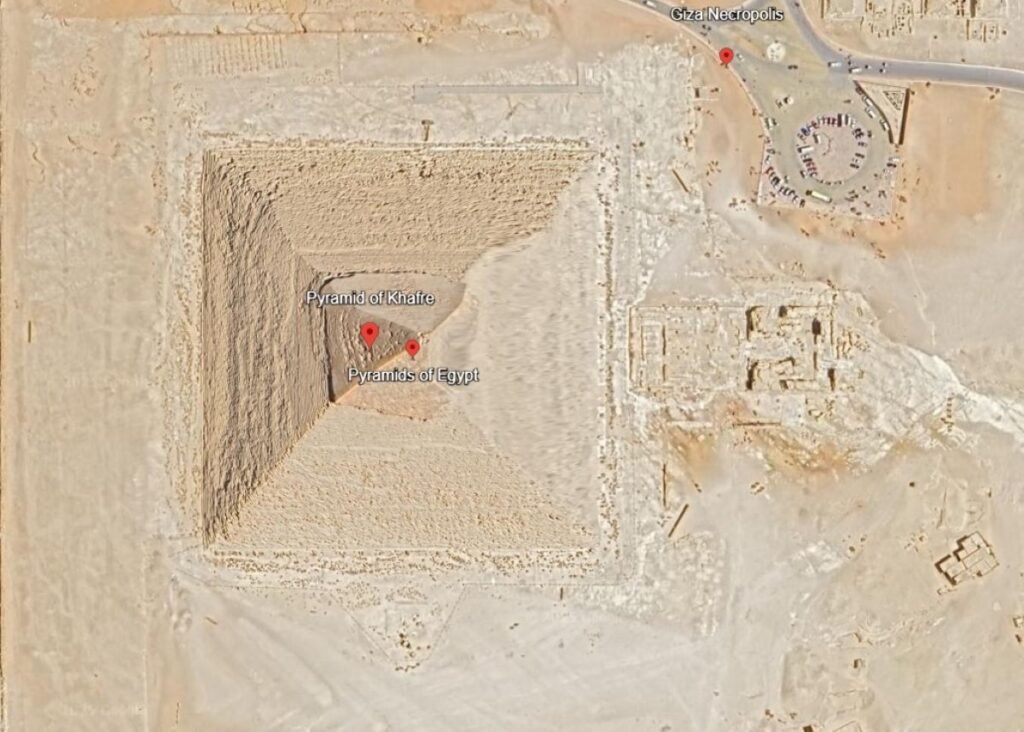
Source: Google Earth.
Egypt is an ancient land littered with vast complexes and man-made wonders from millennia ago. However, with such a storied history, it stands to reason that there are layers to this story, and some of them have not been uncovered. Sleuths on the internet have spotted what could be undiscovered pyramids that could offer insights into unknown aspects of this ancient culture.
Pentagram Park (Kazakhstan)
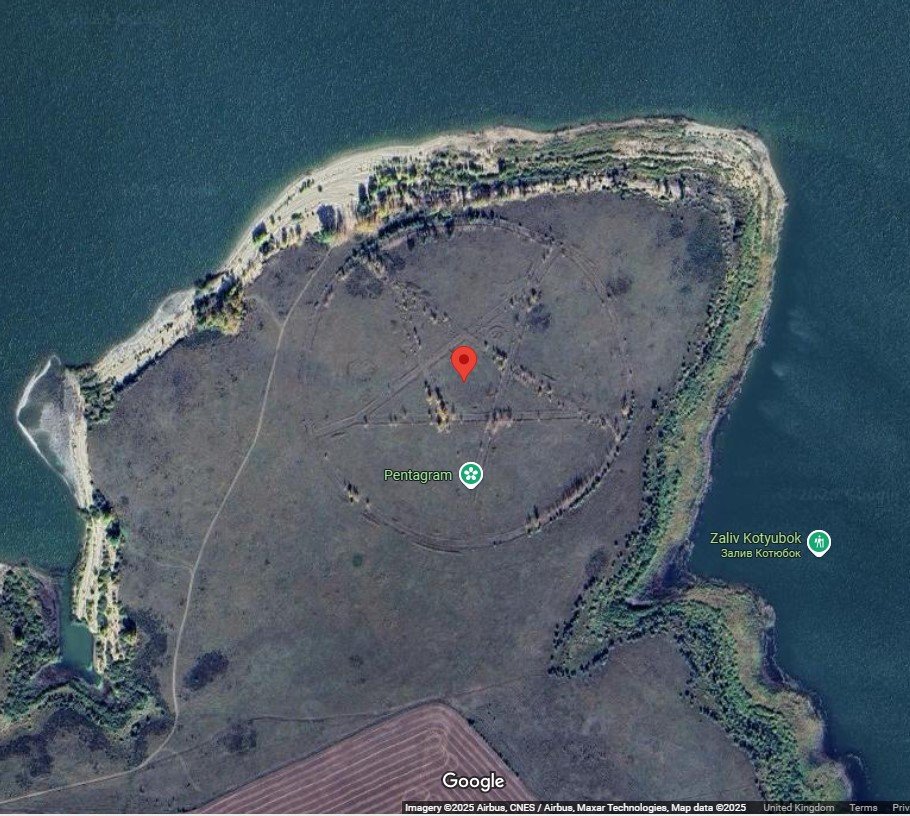
Source: Google Earth.
Before it was the forte of occultists and conspiracy theorists, the pentagram appeared on tablets and vases some 5,000 years ago as a symbol of health and recognition in ancient Mesopotamia. In Kazakhstan, however, someone thought it would make a neat design for a public park. The outer ring is an access road, and with trees growing along the lines, it will only get more visible from space.
Desert Breath (Egypt)

Source: Google Earth
The ancients didn’t build megastructures to be seen from space. So, what happens when you make something specifically meant to appeal to both visitors on the ground and onlookers from space in the modern age? The answer is Desert Breath, an art installation by Danae Stratou, Alexandra Stratou, and Stella Constantinides that covers 1 million square feet. It was created in 2007 and celebrates the desert as a “state of mind.”
The Hidden ‘Sky Rainforest’ (Mozambique)

Source: Google Earth
On top of the rather flat-topped Mount Mabu in Mozambique lies an isolated rainforest with species found nowhere else on earth. The forest was known to locals for a long time but was only discovered by the international community in 2005. The Mountain’s rainforest remains preserved due to the area’s inaccessibility, historical circumstances, and, more recently, government efforts. Mysteries about its biodiversity remain to be uncovered.
Island In A Lake On An Island In A Lake On An Island (Canada)
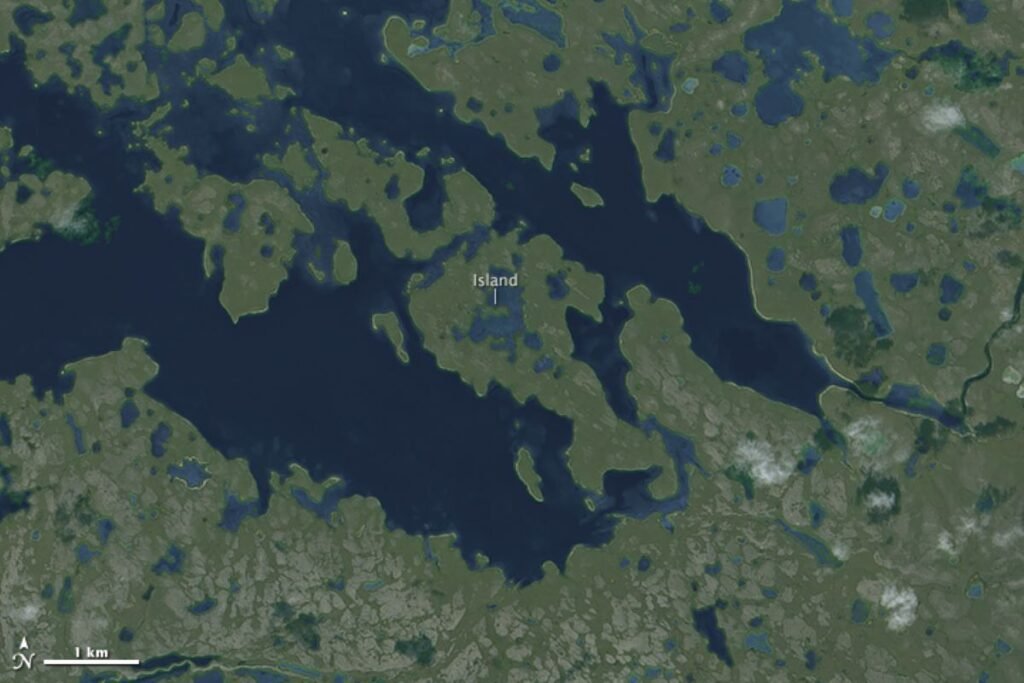
Image source: NASA Earth Observatory
Yes, there are two of these. This second one is in Canada; likely, no one has ever been there. The island doesn’t even have a name and is located inside one of the numerous and long finger lakes located 75 miles from the southern coast of Victoria Island. Google Earth aficionados who scour the globe for and find all sorts of features found this feature.
The Davis Monthan Air Force Base Boneyard (Arizona)
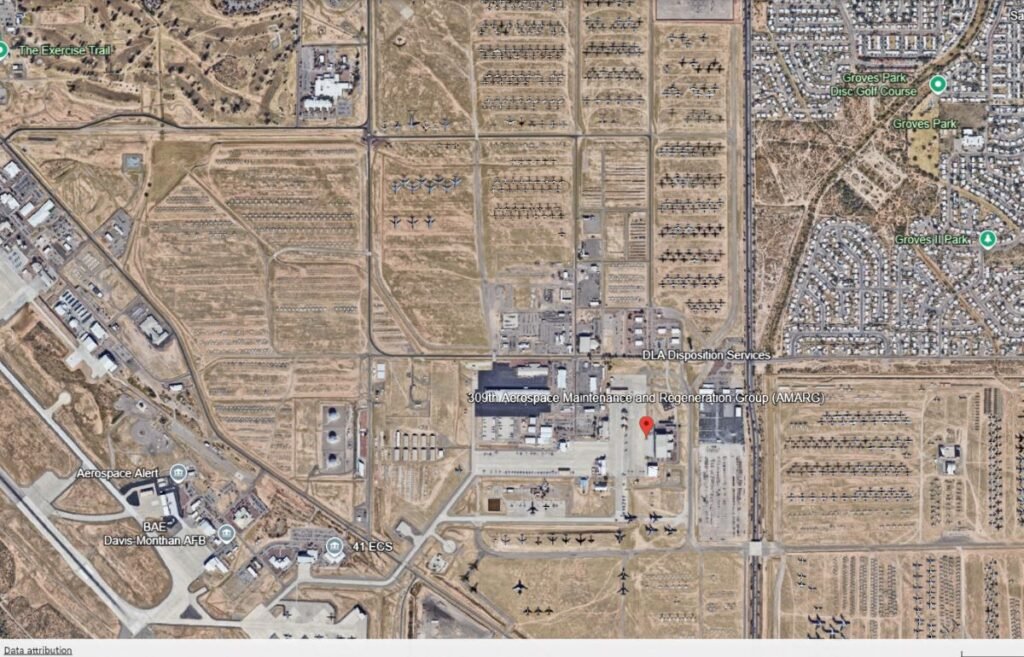
Source: Google Earth
Commonly referred to as the Boneyard, the Davis Monthan Air Force Base is home to the 309th Aerospace Maintenance and Regeneration Group. The facility is large and is used as open-air storage for more than 4,000 decommissioned military aircraft. The dry climate minimizes corrosion, making it a perfect location and providing a stunning aerial view.
